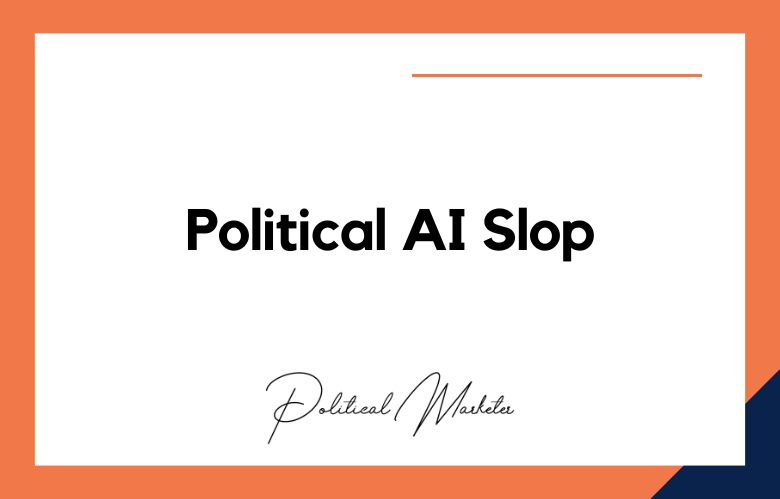The world of political analytics is a complicated one. There are three types of analytics that one can use to predict the future: descriptive, predictive, and prescriptive. This article will explain what each type entails so you can better understand how they work in politics.
In today’s political climate, it seems as if every politician is using data analytics to determine the best course of action to win an election. However, not everyone knows how they work or why they are essential. In this blog post, we’ll look at a few examples of different types of analytics and talk about their importance in politics.
What is Political Analytics?
Political Analytics is a project that collects data to predict elections.
Political Analytics is a social network that allows you to create profiles tailored to your interests.
Political Analytics is a political data analysis tool that helps you better understand the American electorate and make more informed decisions.
Political Analytics is a popular data science blog that helps people understand the world around them.
Political Analytics is a process that includes the identification of voters, information about their preferences and opinions, data analysis to determine how they are likely to be influenced by various messages or events, and finally, evaluation based on the effectiveness of the candidates’ strategies.
First, it’s essential to understand the voter demographics. Then you can analyze their stances on specific issues and predict how they will vote in an election.
The political analytics process is very complex. Many individuals participate in the formulation of policy, which involves input from multiple spheres such as education, industry, and business.
The data collected helps decide how policies are formed based on the goals.
What is Descriptive Political Analytics?
It is a category of political science that focuses on describing government systems, analyzing their behavior, and predicting future outcomes.
Descriptive Political Analytics polls the entire population to determine their views on political topics.
Descriptive Political Analytics is a large data set that analyzes descriptive information about politics. The dataset contains information on the elections of all countries globally, including their population, GDP, and more.
What is Predictive Political Analytics?
Predictive Political Analytics is a model that uses historical voting data to predict the outcome of political races.
Predictive Political Analytics is a method that uses historical voting data, demographic information, polling numbers, and other relevant factors to predict the outcome of political races.
Predictive political analytics is a new technique used by campaigns to identify likely voters and persuade them. It’s based on statistical modeling and can be used to evaluate both voter outreach and campaign strategy.
What is Prescriptive Political Analytics?
Prescriptive Political Analytics is a field of study that uses computational models to predict political activities.
Prescriptive Political Analytics is the application of data science to solve problems in political campaigns.
Prescriptive Political Analytics is a way of using data to determine how voters will think and act.
Prescriptive Political Analytics is a new field that uses machine-learning methods to predict the probability of political events.
What is a political analytics strategy?
Political analytics is an essential part of any campaign, including fundraising, messaging, and targeting. To change the world for the better, you need to know what’s happening around you.
A political analytics strategy refers to decisions based on data.
Political analytics is a strategy used by political consultants for many years, but it’s only recently become a more widespread practice.
A political analytics strategy is a way of collecting data from the internet about people’s opinions on politics to be more informed in your decision when voting.
Decoding Political Analytics Strategies
- Define your political affiliation
- Find out what the other side is saying about you and your schedule
- Research polling data to see how people feel about key issues in the campaign
- Study recent legislation to see how it will affect your campaign
- Create a list of talking points for debates, speeches, and interviews
- Political analytics is the study of using data and statistics to predict outcomes
- Political analytics is the process of collecting, analyzing, and interpreting data
- It includes identifying trends in public opinions, such as how people feel about a particular issue or candidate
- Data can be collected from polls, social media posts, websites, and other sources to find out what issues are important to voters
- Analytics can also be used to predict voter turnout based on past voting patterns
- The use of analytics in politics has become more widespread
- Analytics can be used to track the effectiveness of campaign strategies, including TV ads and social media posts
- Data-driven decisions are often based on statistical analyses that identify patterns, trends, and anomalies in data sets
- Campaigns should use analytics tools to help them better understand their audience
- Understand the fundamentals of analytics
- Analyze your data to identify patterns and trends
- Gather insights on what’s happening in your industry or market segment
- Identify opportunities for growth or improvement
The National Institute for Computer-Assisted Reporting (NICAR) lists different types.
- Predictive Analytics, which predicts an outcome based on past patterns and trends;
- Descriptive Analytics, which describes what happened;
- Diagnostic Analytics, which identifies problems through analysis;
- Prescriptive Analytics, which suggests solutions to current or future issues;
- Forecasting Analytics, which predicts future events based on historical data about similar events in the past;
- Qualitative Analysis/Qualitative Data Analysis/Qualitative Research Methods are used to identify patterns in qualitative data
- Conclusion
Politics is a complex and ever-changing world. What will happen next? This question has plagued the minds of politicians, journalists, and citizens alike for centuries.
To answer this tricky query, we turn to Political Analytics Consulting services that can provide you with predictive analysis on what’s happening now and how it might unfold in the future. Contact us today if you want help understanding how politics work or need guidance on where they may be headed!
If you wish to learn more about how political analytics can help your business, contact us. Our expert team will partner with you to provide the best predictive models for your needs. What type of Political Analytics Consulting do you need?
Conclusion
Political analytics has transformed from a backroom number-crunching function into a central pillar of modern election strategy. As campaigns evolve in an increasingly data-driven ecosystem, political analytics empowers candidates and parties to make informed decisions about where to campaign, who to target, what messages to deliver, and when to act. From voter segmentation and microtargeting to real-time social media sentiment analysis and predictive turnout models, the science of political behavior has become both granular and strategic.
However, the growing reliance on analytics also raises challenges around data ethics, voter privacy, and algorithmic bias. For political consultants, the future lies in integrating quantitative insights with narrative intelligence—balancing cold data with the warm human truths of voter emotion and identity. Ultimately, decoding political analytics is not just about understanding data but about using it responsibly to enhance democratic engagement, transparency, and campaign effectiveness.
One way to get in touch is by filling out our online form on this site or give us a call at +91 9848321284. Let’s work together today!
Decoding Political Analytics: Descriptive, Predictive, Prescriptive – FAQs
What Is Political Analytics?
Political analytics refers to the use of data science, statistics, and AI to understand, predict, and influence political behavior, campaign performance, and voter sentiment.
How Is Political Analytics Used in Election Campaigns?
It is used for voter targeting, messaging optimization, media planning, turnout prediction, and measuring campaign impact.
What Are the Core Components of Political Analytics?
Key components include voter data collection, segmentation, behavioral modeling, A/B testing, and real-time dashboards.
What Types of Data Are Used in Political Analytics?
Demographic data, historical voting records, social media activity, location data, survey results, and engagement metrics.
What Is Microtargeting in Political Campaigns?
Microtargeting involves tailoring messages to specific voter segments based on detailed demographic and behavioral data.
How Does Political Analytics Improve Voter Outreach?
By identifying likely supporters, swing voters, and mobilization targets, enabling more efficient and persuasive communication.
Can Political Analytics Predict Election Outcomes?
It can forecast trends and voter turnout probabilities, but final outcomes may vary due to last-minute shifts or external events.
What Is Real-Time Analytics in Campaign Strategy?
It involves monitoring live feedback from voters, media, and digital platforms to adjust messaging and strategy instantly.
What Role Does AI Play in Political Analytics?
AI helps in automating sentiment analysis, clustering voter behavior, detecting misinformation, and optimizing resource allocation.
Are There Risks Associated with Political Analytics?
Yes, including voter manipulation, loss of privacy, algorithmic bias, and lack of transparency in data usage.
What Is Sentiment Analysis in Politics?
It is the process of analyzing social media or textual data to understand public opinion on candidates or issues.
How Do Campaigns Use A/B Testing?
By comparing variations of ads, emails, or slogans to determine which version performs better with specific audiences.
What Platforms Are Commonly Used for Political Analytics?
CRM tools, polling dashboards, social media monitoring tools, GIS mapping systems, and data visualization platforms.
How Important Is Data Quality in Political Analytics?
Extremely important. Inaccurate or outdated data can mislead strategy and waste campaign resources.
Can Small Political Campaigns Use Analytics Effectively?
Yes, even basic voter data analysis can enhance local campaign targeting, volunteer mobilization, and budget planning.
What Is the Ethical Use of Political Analytics?
It involves transparency, informed consent, unbiased modeling, and avoiding dark patterns in voter influence.
How Does Political Analytics Affect Media Strategy?
It informs where to place ads, what content to push, which influencers to engage, and how to respond to opposition narratives.
What Is Geo-Targeting in Political Campaigns?
It refers to delivering campaign messages based on the geographic location of voters, often down to the booth level.
How Can Political Analytics Be Used After Elections?
To analyze performance, voter shifts, issue resonance, and to build long-term voter databases for future campaigns.
Is Political Analytics Changing How Democracy Works?
Yes, it’s reshaping how campaigns communicate, how citizens engage, and how political narratives are crafted and contested.











